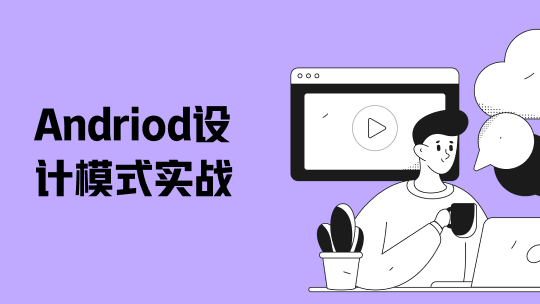String event
从Spring的4.2版本后,开始支持注解来进行事件广播接收,这使得我们非常方便 当然了Spring也支持JMS消息中间件,这个就可以做多个系统集成了,感觉有点偏题了,先看看事件怎么通过注解来开发
基础支持
先来看看支持哪些默认事件
Event
描述
ContextRefreshedEvent
当ApplicationContext或者叫spring被初始化或者刷新initialized会触发该事件
ContextStartedEvent
spring初始化完,时触发
ContextStoppedEvent
spring停止后触发,一个停止了的动作,可以通过start()方法从新启动
ContextClosedEvent
spring关闭,所有bean都被destroyed掉了,这个时候不能被刷新,或者从新启动了
RequestHandledEvent
请求经过DispatcherServlet时被触发,在request完成之后
程序1(Service)
先看看程序
ApplicationEventPublisher这个是spring的东西,需要注入来进行发送 因为实现了
ApplicationEventPublisherAware所以setApplicationEventPublisher这个方法会自动帮我们调用,拿到广播发送者
/**
* @author Carl
* @date 2016/8/28
* @modify 版权所有.(c)2008-2016.广州市森锐电子科技有限公司
*/
public class EmailService implements ApplicationEventPublisherAware {
private List<String> blackList;
private ApplicationEventPublisher publisher;
public void setBlackList(List<String> blackList) {
this.blackList = blackList;
}
public void setApplicationEventPublisher(ApplicationEventPublisher publisher) {
this.publisher = publisher;
}
/**
* 具体广播类
* @param address
* @param text
*/
public void sendEmail(String address, String text) {
if (blackList.contains(address)) {
BlackListEvent event = new BlackListEvent(this, address, text);
publisher.publishEvent(event);
return;
}
// send email...
}
}
程序2(Event)
这里也是需要继承
ApplicationEvent,并且里面可以实现自己的一些必要参数等等,让在收到广播时进行获取,当然通过source也可以的
/**
* @author Carl
* @date 2016/8/28
* @modify 版权所有.(c)2008-2016.广州市森锐电子科技有限公司
*/
public class BlackListEvent extends ApplicationEvent {
private String address;
private String test;
public BlackListEvent(Object source, String address, String test) {
super(source);
this.address = address;
this.test = test;
}
public String getAddress() {
return address;
}
public void setAddress(String address) {
this.address = address;
}
public String getTest() {
return test;
}
public void setTest(String test) {
this.test = test;
}
}
程序3(receiver)
用spring还是得遵循他一套规范,那么接收者的,还得实现ApplicationListener接口,那么所有收到泛型广播的对象,都会转发
onApplicationEvent接口里面来的
当然了spring想得很周全,不一定通过实现ApplicationListener这个类,在bean类里面加入注解
@EventListener
/**
* @author Carl
* @date 2016/8/28
* @modify 版权所有.(c)2008-2016.广州市森锐电子科技有限公司
*/
public class BlackListNotifier implements ApplicationListener<BlackListEvent> {
private String notificationAddress;
public void setNotificationAddress(String notificationAddress) {
this.notificationAddress = notificationAddress;
}
@EventListener
public void onApplicationEvent(BlackListEvent event) {
// notify appropriate parties via notificationAddress...
System.out.println("onApplicationEvent, some thing I receive:" + event.getAddress() + ",text:" + event.getTest());
}
@EventListener(condition = "#event.test == 'foo'")
public void onApplicationCustomerEvent(BlackListEvent event) {
System.out.println("onApplicationCustomerEvent,some thing I receive:" + event.getAddress() + ",text:" + event.getTest());
// notify appropriate parties via notificationAddress...
}
@EventListener({ContextStartedEvent.class, ContextRefreshedEvent.class})
public void handleContextStart() {
System.out.println("-------------handleContextStart");
}
/**
* 参数可以给BlackListEvent 可以不给
*/
@EventListener(classes = {BlackListEvent.class})
public void handleBlackListEvent() {
System.out.println("-------------handleBlackListEvent");
}
}
@EventListener
解析一下这个注解怎么用,犹如上面的程序,除了实现接口外,可以通过@EventListener注解来实现
condition可以使用SpEL表达式,就是当满足条件才执行classes当触发event对象是这个class才会被执行
程序4(config bean)
这里主要对一些服务以及接受广播bean的注册,以便接受
/**
* 配置
* @author Carl
* @date 2016/8/28
* @modify 版权所有.(c)2008-2016.广州市森锐电子科技有限公司
*/
@Configuration
public class AppConfig {
@Bean
public EmailService emailService() {
EmailService s = new EmailService();
List<String> emails = new ArrayList<>(3);
emails.add("known.spammer@example.org");
emails.add("known.hacker@example.org");
emails.add("john.doe@example.org");
s.setBlackList(emails);
return s;
}
@Bean
public BlackListNotifier notifier() {
BlackListNotifier notifier = new BlackListNotifier();
notifier.setNotificationAddress("blacklist@example.org");
return notifier;
}
}
个人学习记录说得不对麻烦大家谅解,或进行评论补充













